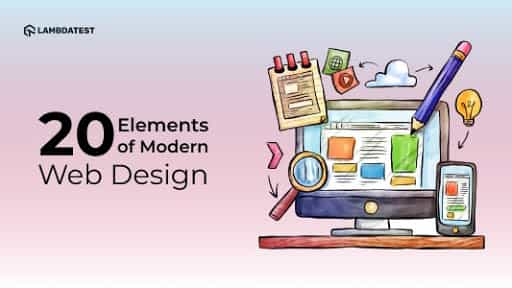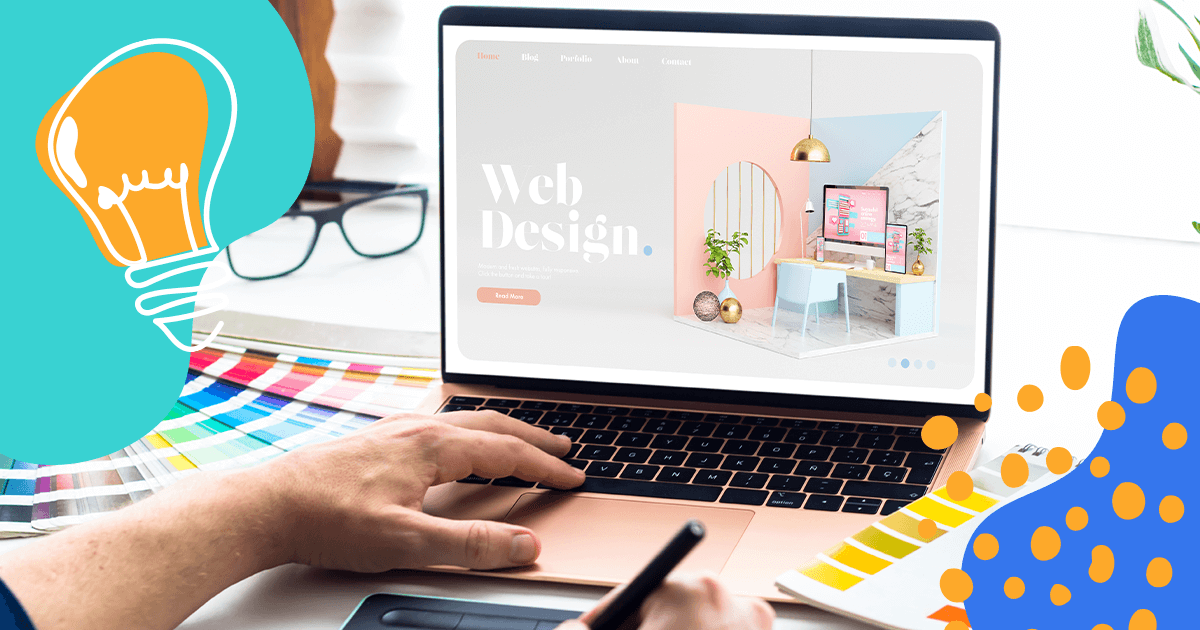All Categories
Featured
Table of Contents
- – Law Firm Website Design, Attorney Web Design, ...
- – Boxcar Studio - Wordpress & Drupal Web Design...
- – Web Design Service - Professionally Designed ...
- – Web Design Scholarship - Nyc Digital Marketin...
- – Web Design Vs. Web Development - Upwork Tips ...
- – Web Design Courses & Tutorials - Codecademy T...
- – Web Design Courses & Tutorials - Codecademy ...
- – Minneapolis Web Design - 100+ Five Star Revi...
- – What Is Web Design (And How Do I Get It Righ...
- – Top 30 Web Design Companies - Apr 2022 - Des...
- – Mrw Web Design - Wordpress Websites For Nonp...
Law Firm Website Design, Attorney Web Design, Lawyer ... Tips and Tricks:
Quick summary Usability and the energy, not the visual style, determine the success or failure of a website. Since the visitor of the page is the only person who clicks the mouse and for that reason chooses everything, user-centric style has actually developed as a standard method for successful and profit-oriented web design - web design frederick md.
and the energy, not the visual design, identify the success or failure of a website. Considering that the visitor of the page is the only person who clicks the mouse and therefore chooses whatever, user-centric style has ended up being a standard approach for successful and profit-oriented web style. If users can't utilize a function, it may as well not exist.
g. where the search box should be placed) as it has actually already been done in a variety of articles; instead we focus on the approaches which, used correctly, can cause more advanced style decisions and simplify the procedure of perceiving presented information. Please notice that you may be thinking about the usability-related posts we have actually published prior to: Principles Of Great Website Design And Reliable Website Design Guidelines, In order to use the principles properly we first require to understand how users engage with sites, how they believe and what are the standard patterns of users' habits.
Boxcar Studio - Wordpress & Drupal Web Design ... - Ann Arbor Tips and Tricks:
Visitors glimpse at each new page, scan a few of the text, and click the very first link that catches their interest or slightly looks like the thing they're searching for. In truth, there are large parts of the page they don't even take a look at. A lot of users browse for something fascinating (or useful) and clickable; as quickly as some promising candidates are discovered, users click.
If a page supplies users with high-quality content, they are ready to compromise the content with advertisements and the style of the website. This is the reason that not-that-well-designed websites with high-quality content gain a great deal of traffic over years. Content is more vital than the style which supports it.

Extremely simple principle: If a website isn't able to fulfill users' expectations, then designer failed to get his job done correctly and the business loses cash. The higher is the cognitive load and the less intuitive is the navigation, the more prepared are users to leave the website and search for options.
Web Design Service - Professionally Designed Websites Tips and Tricks:
Neither do they scan webpage in a direct fashion, going sequentially from one website area to another one. Instead users satisfice; they choose the very first reasonable choice. As quickly as they find a link that appears like it may lead to the objective, there is an extremely good opportunity that it will be right away clicked.
It doesn't matter to us if we comprehend how things work, as long as we can utilize them. If your audience is going to act like you're developing billboard, then design excellent signboards." Users want to be able to manage their internet browser and rely on the constant information discussion throughout the website.
If the navigation and website architecture aren't intuitive, the number of concern marks grows and makes it harder for users to comprehend how the system works and how to get from point A to point B. A clear structure, moderate visual ideas and quickly recognizable links can assist users to discover their path to their objective.
Web Design Scholarship - Nyc Digital Marketing Agency Tips and Tricks:

claims to be "beyond channels, beyond items, beyond circulation". What does it mean? Because users tend to explore sites according to the "F"-pattern, these 3 declarations would be the first components users will see on the page once it is loaded. Although the design itself is easy and user-friendly, to comprehend what the page is about the user requires to search for the answer.
When you've achieved this, you can communicate why the system works and how users can gain from it. Individuals won't use your web site if they can't find their way around it. 2. Don't Waste Users' Persistence, In every job when you are going to offer your visitors some service or tool, attempt to keep your user requirements very little.
Novice visitors are willing to, not filling long web kinds for an account they might never utilize in the future. Let users check out the site and discover your services without requiring them into sharing private information. It's not reasonable to force users to get in an email address to test the function.
Web Design Vs. Web Development - Upwork Tips and Tricks:
Stikkit is an ideal example for an user-friendly service which needs almost absolutely nothing from the visitor which is inconspicuous and soothing. Which's what you desire your users to feel on your web site. Obviously, Termite needs more. The registration can be done in less than 30 seconds as the type has horizontal orientation, the user doesn't even need to scroll the page.
A user registration alone suffices of an impediment to user navigation to reduce incoming traffic. 3. Manage To Focus Users' Attention, As sites offer both static and vibrant content, some elements of the user interface attract attention more than others do. Clearly, images are more captivating than the text simply as the sentences marked as strong are more attractive than plain text.
Focusing users' attention to specific areas of the website with a moderate use of visual components can assist your visitors to get from point A to point B without thinking of how it actually is supposed to be done. The less concern marks visitors have, the they have and the more trust they can develop towards the business the website represents.
Web Design Courses & Tutorials - Codecademy Tips and Tricks:
4. Pursue Function Direct exposure, Modern web styles are usually slammed due to their method of assisting users with visually appealing 1-2-3-done-steps, big buttons with visual results and so on. From the design point of view these aspects in fact aren't a bad thing. On the contrary, such as they lead the visitors through the website material in a really basic and user-friendly method.
The site has 9 primary navigation options which are visible at the first glance. The choice of colors might be too light. is a basic principle of effective interface style. It doesn't really matter how this is achieved. What matters is that the content is well-understood and visitors feel comfortable with the method they connect with the system.
Rather a price: simply what visitors are looking for. An optimum solution for reliable writing is touse short and succinct expressions (come to the point as quickly as possible), usage scannable design (classify the material, use multiple heading levels, utilize visual aspects and bulleted lists which break the flow of consistent text blocks), usage plain and unbiased language (a promo doesn't require to sound like ad; give your users some affordable and unbiased factor why they should utilize your service or remain on your site)6.
Web Design Courses & Tutorials - Codecademy Tips and Tricks:
Users are hardly ever on a site to delight in the design; in addition, in the majority of cases they are searching for the info regardless of the design - web design frederick md. Pursue simplicity rather of intricacy. From the visitors' viewpoint, the very best website design is a pure text, without any ads or additional material obstructs matching exactly the inquiry visitors utilized or the content they've been looking for.
Finch clearly provides the information about the website and offers visitors a choice of choices without overcrowding them with unneeded content. 7. Do not Hesitate Of The White Space, Really it's truly difficult to overstate the importance of white area. Not only does it help to for the visitors, but it makes it possible to view the details presented on the screen.
Complex structures are more difficult to check out, scan, analyze and deal with. If you have the choice between separating two design sectors by a visible line or by some whitespace, it's normally better to use the whitespace service. (Simon's Law): the better you manage to offer users with a sense of visual hierarchy, the much easier your material will be to view.
Minneapolis Web Design - 100+ Five Star Reviews - Seo ... Tips and Tricks:
The exact same conventions and rules must be used to all elements.: do the most with the least amount of hints and visual elements. Four major points to be thought about: simplicity, clearness, diversity, and focus. Simplicity consists of just the aspects that are most important for communication. Clarity: all components must be developed so their significance is not unclear.
Conventions Are Our Buddies, Conventional style of site aspects does not result in an uninteresting web website. It would be an use headache if all sites had various visual presentation of RSS-feeds.
understand what they're getting out of a site navigation, text structure, search placement etc. A typical example from functionality sessions is to equate the page in Japanese (presuming your web users don't know Japanese, e. g. with Babelfish) and provide your functionality testers with a job to find something in the page of various language.
What Is Web Design (And How Do I Get It Right)? - 99designs Tips and Tricks:
Test Early, Test Often, This so-called TETO-principle should be used to every web style job as usability tests typically offer into significant issues and problems related to a provided layout. Test not too late, not too little and not for the incorrect reasons.
Some important points to bear in mind: according to Steve Krug, and testing one user early in the task is better than testing 50 near the end. Accoring to Boehm's very first law, errors are most frequent throughout requirements and design activities and are the more costly the later they are eliminated.
That indicates that you create something, test it, fix it and after that evaluate it once again. There might be problems which haven't been found throughout the first round as users were virtually blocked by other issues. use tests. Either you'll be pointed to the issues you have or you'll be indicated the absence of significant design defects which is in both cases an useful insight for your job.
Top 30 Web Design Companies - Apr 2022 - Designrush Tips and Tricks:

This holds for designers. After you've worked on a website for few weeks, you can't observe it from a fresh point of view any longer. You know how it is developed and therefore you know exactly how it works you have the knowledge independent testers and visitors of your site wouldn't have.
It can be connected to other locations such as graphic style, user experience, and multimedia arts, however is more aptly seen from a technological standpoint. It has actually become a big part of individuals's daily lives. It is difficult to envision the Internet without animated graphics, various designs of typography, background, videos and music.

Throughout 1991 to 1993 the Web was born. Text-only pages could be viewed using a simple line-mode web browser. In 1993 Marc Andreessen and Eric Bina, produced the Mosaic browser. At the time there were numerous browsers, however the majority of them were Unix-based and naturally text heavy. There had been no integrated technique to graphic design components such as images or noises.
Mrw Web Design - Wordpress Websites For Nonprofits ... Tips and Tricks:
The W3C was produced in October 1994 to "lead the World Wide Web to its complete capacity by developing typical procedures that promote its advancement and ensure its interoperability." This discouraged any one business from monopolizing a propriety internet browser and programming language, which could have altered the effect of the Web as a whole.
As this has actually happened the technology of the web has also moved on. There have actually likewise been substantial modifications in the method people use and access the web, and this has actually altered how sites are designed.
Learn more about Lovell Media Group LLC or TrainACETable of Contents
- – Law Firm Website Design, Attorney Web Design, ...
- – Boxcar Studio - Wordpress & Drupal Web Design...
- – Web Design Service - Professionally Designed ...
- – Web Design Scholarship - Nyc Digital Marketin...
- – Web Design Vs. Web Development - Upwork Tips ...
- – Web Design Courses & Tutorials - Codecademy T...
- – Web Design Courses & Tutorials - Codecademy ...
- – Minneapolis Web Design - 100+ Five Star Revi...
- – What Is Web Design (And How Do I Get It Righ...
- – Top 30 Web Design Companies - Apr 2022 - Des...
- – Mrw Web Design - Wordpress Websites For Nonp...
Latest Posts
Web Design - Wikipedia Tips and Tricks:
Siteinspire - Web Design Inspiration Tips and Tricks:
Web Design And Applications - W3c Tips and Tricks:
More
Latest Posts
Web Design - Wikipedia Tips and Tricks:
Siteinspire - Web Design Inspiration Tips and Tricks:
Web Design And Applications - W3c Tips and Tricks: